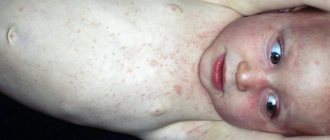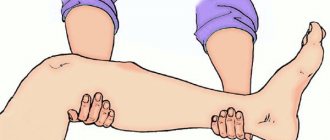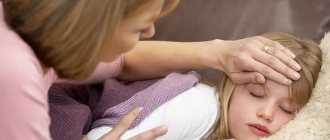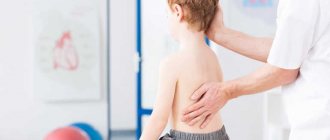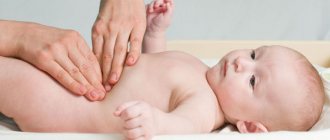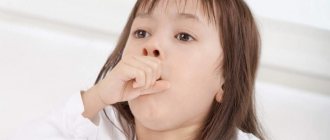Varus deformity of the foot is nothing more than a way of supporting the baby on a horizontal surface, developed in the first years of life, and the associated shape of the foot. And at the age of 2-3, and even 6 months, it is simply too early to make such a diagnosis: the load on the legs is clearly insufficient, and there is no need to “sound the alarm”, just as you should not panic about the fact that a newborn has no teeth. But let’s take a closer look: what is foot varus from the point of view of orthopedics, how does it manifest itself, and when should treatment be done?
Treatment of varus deformity of the foot in children (photo)
An x-ray photo will help confirm the diagnosis of varus foot deformity in children. With a slight degree of curvature of the arch, there is a very low probability that this is an individual feature of the shape of the feet, which will straighten out on its own over time. In some cases, it is not always possible to adequately assess the degree of deformation during a visual inspection. Especially in a very active child who does not want to sit or stand still for a single extra minute while he is examined by a specialist.
Photo. Varus foot on x-ray
Causes
A great variety of reasons can lead to the curvature of the axes and the inability to close the knees.
The disease most often occurs in children belonging to the so-called risk group, which includes:
- premature;
- low birth weight babies;
- babies with cerebral palsy;
- children who suffered rickets in the first year of life;
- children with injuries to the ankle, knee, or hip joint.
A considerable share of responsibility lies with the parents. Babies who are brought to an upright position early are placed on their legs before they reach the age of 9-10 months, placed in a variety of verticalizers (walkers and jumpers), especially if they are quite well-fed and weigh more than the age norm, are more susceptible to such O-shaped shin deformities.
The cause of the development of foot varus can also be uncomfortable shoes that do not support the legs of a baby who has already begun to stomp on his own two feet, as well as poor nutrition, in which the child is deficient in calcium and important vitamins.
Principles of treatment
This pathology cannot be diagnosed in a newborn child. This is due to the fact that the varus position of the feet is formed in the first few years after the baby begins to walk. Therefore, if the baby is walking and the parents suspect that the child’s feet are not developing properly, he should be immediately shown to an orthopedist. Only a doctor will be able to determine whether everything is normal with the baby’s legs.
Treatment of foot deformities should begin as soon as possible after diagnosis. This is due to the fact that in the early stages of the development of pathology, the curvature can be relatively easily corrected with the help of specially selected shoes or exercises.
In no case should you let everything take its course, since the child is growing rapidly, and the flat varus position of the feet will not go away over time. There is a high risk of improper weight distribution, which can cause gait disturbances and poor shock absorption when walking. Over time, joints suffer: ankle, knee and hip.
Varus alignment of the feet in children can be corrected. Parents must be patient, because this is a rather lengthy process that can drag on for several months or even years.
If a child has varus deformity of the feet, the doctor develops an individual scheme that must be strictly adhered to:
- Shoes. Shoes and sandals must only have a hard heel. Care should be taken to ensure that they are equipped with orthopedic insoles, instep supports and correctors. This will keep your leg straight and prevent it from turning outward. An orthopedist will help you choose the right shoes, since doing this on your own is almost impossible. It is not recommended to buy shoes or boots with a margin of 1-2 cm. Shoes must be true to size; they must exceed the length of the foot by a maximum of 0.5 cm.
- Walking barefoot. Komarovsky considers this method of treating flat feet in children to be the main way to correct the flat-varus position. Additionally, you can use special orthopedic mats, which must be walked on daily.
- Physiotherapeutic methods. Will strengthen the muscle frame and improve blood circulation.
- Surgery. It is performed if the flat varus position of the foot is not amenable to conservative correction.
What it is
With this pathology, curvature of the lower extremities in the form of an arch is visible in children. This affects their gait, children step on the outer side of their feet, they are not active, and they get tired quickly. People call the disease clubfoot, but this is a little incorrect. Clubfoot is a congenital disease, and foot varus is an acquired disease that develops in a one-year-old child under the influence of unfavorable external factors.
Outward deformation of the foot occurs when the child begins to take his first steps. In infants, the legs are bent in the shape of the letter O. In this case, the heel and forefoot deviate inward, turning the knee joints, the meniscus will be deformed, the joint space will narrow from the inside and increase from the outside. The curvature of the limbs will be visually visible. The child will not be able to close his knees tightly and steps on the outer edge of the foot. Depending on the degree of deformation, therapy is prescribed to correct the curvature of the feet. If the necessary treatment is not carried out, the consequences will be disastrous, including disability and the development of pathologies in other joints.
Physiotherapeutic therapy
Varus deformity of the foot in children requires the mandatory use of massage.
It must be done by a qualified specialist with the necessary knowledge and skills. The massage is carried out in the clinic or at home, in agreement with the master. The second option is preferable, since the baby will feel free and will be able to fully relax. If a child has a varus position, this does not mean that only the foot will be massaged. To achieve a positive result, it is advisable to start the session with a general relaxing massage. If this is not possible, the lumbar region, buttocks and legs must be included. Massage treatment should be carried out in a course of at least 10 sessions. If necessary, it can be repeated after 6–12 months, depending on the results achieved in the treatment of flat varus feet.
To remove flat feet, you must do specially designed exercises. They include the following movements:
- flexion and extension of the foot in a sitting position;
- external rotations;
- corrective position during games - sitting between the heels;
- squats near a chair with support on the foot;
- stand on your heels;
- lowering the heels from the step (placing a thin book);
- walking “Herringbone”, “Goose step”, “Ladder”.
In order for pes varus to disappear, you need to perform these exercises daily. Only regular work will allow you to achieve success and get rid of pathology.
Surgery
Surgical treatment of varus deformity of the feet is carried out only in cases where conservative placement did not bring the expected positive result and the leg remained in the same position. Most often, the need for surgical correction arises in the case of late presentation of the patient, when the foot is fully formed, as well as in adults.
Surgical intervention is carried out according to the method of T. S. Zatsepin, during which tenoligamentocapsulotomy is performed.
The disadvantage of this method is that 4 incisions are required to provide the necessary access. During the operation, the doctor adjusts the length of the tendons of the muscles and fingers, and removes excess fascia. Thanks to this, it becomes possible to move the foot to the middle position. After this, he fixes it and stitches it.
With modern techniques, it is possible to perform surgery using just one incision. However, this treatment is used mainly in private clinics, and not all parents are able to pay for the operation. The advantage of a single incision is to minimize the risk of damage to the neurovascular structures and reduce the recovery period.
https://youtu.be/1m5hqN3hzOMe
>
After surgery, a cast is placed on the leg. The duration of wearing it is up to 1 month. In the future, it is possible to replace it with a special plaster boot, which must be worn for up to 4 months. In the postoperative period, massage and a course of physical therapy are mandatory.
Diagnosis of the disease
Diagnosis and treatment of the disease is carried out by an orthopedic surgeon. The specialist feels the foot, checks the movements of the joints and the sizes of individual segments. If necessary, the doctor prescribes the following additional tests:
- plantography – study of a foot print;
- X-ray – to analyze the structure of the bones of the foot;
- Magnetic resonance imaging (MRI) - rarely performed and only if the x-ray turned out to be uninformative;
- if hallux valgus occurs due to endocrine and metabolic diseases, a series of tests is prescribed to diagnose the cause of the disorder (we recommend reading: massage for hallux valgus in children at home: video).
Treatment methods for foot varus deformity
There are two approaches to foot correction:
- conservative physiotherapeutic treatment;
- corrective surgery.
Orthopedic shoes and therapeutic exercises
An important therapeutic measure is walking barefoot. At home and on the lawn, on a special orthopedic mat or without it - the main thing is as much as possible. Choosing the right shoes is equally important. To do this, parents need to seek help from an orthopedist. Basic requirements for orthopedic shoes:
- shoes must be strictly in size, you cannot buy them “for growth”, the length of the sole must exceed the length of the foot by 0.5 cm;
- slippers, shoes and sandals must have a solid back;
- It is necessary to have orthopedic insoles, instep supports and correctors that do not allow the foot to turn outward.
Corrective therapy includes regular series of massages of 10 sessions every six months.
It is carried out by specialists in a children's clinic or certified masters of therapeutic massage. The feet, legs, buttocks and lower back are massaged. Massage improves blood flow and promotes muscle development. Physiotherapy exercises (PT) for this disorder are always prescribed. Parents need to learn a set of exercises with their child and repeat them daily for at least 10 minutes (preferably several times a day). Simple examples of exercises that promote proper development of the feet:
- sit on a chair and alternately bend and straighten your feet;
- external circular movements;
- sitting pose between the heels;
- squats with emphasis on the foot (you can use a chair for balance);
- exercises with heels - stand, toe rolls, descent from steps;
- various walking options (herringbone, single file, etc.).
Surgical intervention
With persistent conservative treatment, by the age of 5-7 years the deformity disappears, the legs become straight and even, and the gait becomes normal. If this does not happen, the orthopedist may suggest surgical intervention to the parents. This is a complex surgical operation that is performed in several stages:
- a small fragment is cut out from the tibia;
- the extracted part of the bone is fixed with special screws on the lower leg;
- The Elizarov apparatus is installed for several months.
What consequences can pathology lead to?
Treatment for foot varus cannot be ignored. The consequences of this violation will not appear immediately, but they are unpleasant and inevitable. Children with varus deformity of the feet suffer from insufficient motor activity, excess body weight, the entire musculoskeletal system is disrupted, and in adulthood early arthrosis and other diseases may occur. If the doctor recommends surgical intervention as the only and unalternative method of correction, you should decide on such a radical remedy and not doom the baby to suffering in the future.
Symptoms and signs
An experienced orthopedist can accurately determine the development of the disease by the position of the child’s legs. After the baby begins to walk, he develops a gait. The doctor determines the angle of the arch, the o-shaped curvature of the legs, the inability to close the knees. These are the main signs by which an orthopedist makes a diagnosis. In addition, children develop a characteristic gait. It is shaky, children are unsteady on their feet, run poorly, and often fall. As they grow older, they develop back problems, especially the lumbar region. Subsequently, posture is disturbed, and arthrosis of the knee, hip and ankle joints develops.
Symptoms of curvature
Preventive measures
All deviations in the development of a child’s skeleton are much easier to prevent than to cure. The main prevention is the close attention of parents to the baby’s health, his posture, gait, habits and preferences. Basic preventive measures to prevent foot varus deformity in children:
- responsible choice of shoes, refusal to buy shoes of a larger size;
- Constant use of vitamin D by a child under 3 years of age to prevent rickets (we recommend reading: what are the signs of rickets in infants and its photos);
- providing the diet with calcium (cottage cheese, milk, hard cheese, herbs, nuts and other foods that contain calcium);
- when teaching a baby to walk, pay special attention to the positioning of the legs;
- control of the child’s weight - obesity has a negative impact not only on metabolic processes, but also increases the load on the legs;
- control of foot placement and wear of shoe soles;
- active lifestyle of the child, playing sports;
- strengthening the immune system;
- regular examinations by an orthopedist;
- timely treatment of infectious diseases.
Prevention
Prevention of pathology lies in the correct management of pregnancy and in the woman’s intake of vitamins and minerals. After the birth of a child, you should spend more time in the fresh air; if there is no breastfeeding, then you need to ensure that the child receives a sufficient amount of calcium and vitamin D.
After 3 months of age, parents need to pay attention to the shape of their children’s legs, especially during the period when they begin to walk independently. Even if parents do not notice abnormalities, it is necessary to undergo an examination by an orthopedic doctor for preventive purposes. And also for prevention with children, you should perform exercises for the development of the baby, take a massage course, or parents should independently learn how to massage their child.
source
